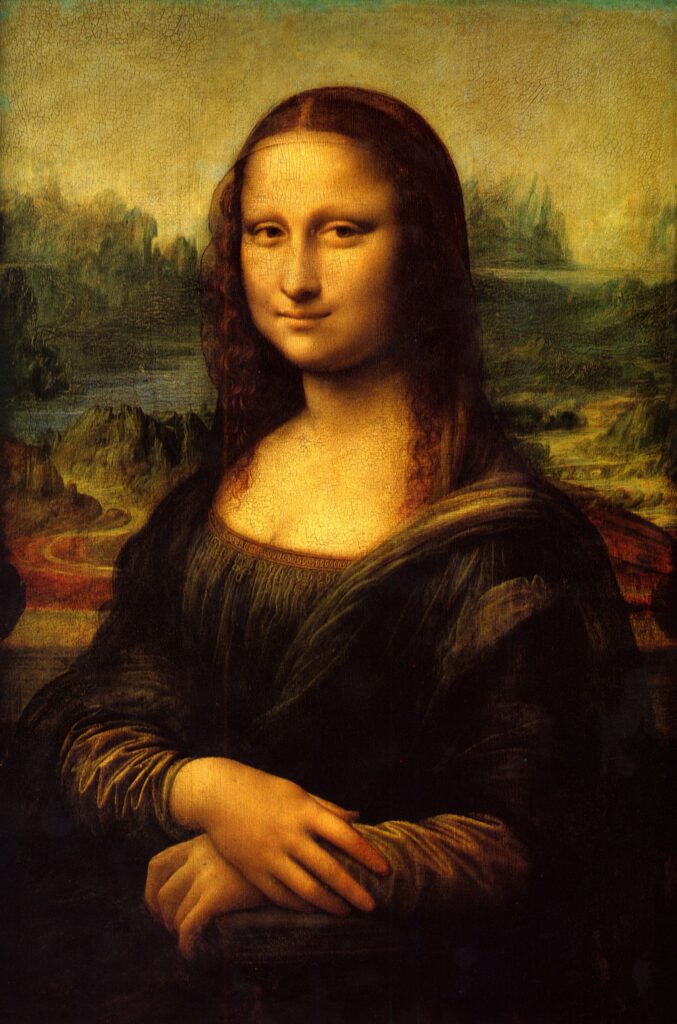Top 10 Famous paintings and their lasting impact on art and culture
Mona Lisa by Leonardo Da Vinci:

The Mona Lisa needs no introduction, known for her enigmatic smile. This masterpiece by Leonardo Da Vinci is considered one of the world’s most priceless paintings. The portrait bears a resemblance to Renaissance depictions of the Virgin Mary. The woman sits upright in an armchair with folded arms, exuding a reserved demeanor. Leonardo achieved a lifelike appearance by eschewing traditional outlines, using soft blending to create an ambiguous mood. Notably, it was among the first portraits to place the subject against an imaginary landscape, showcasing Leonardo’s pioneering use of aerial perspective. Today, it is housed in the Louvre Museum, Paris.
The Scream by Edvard Munch:

This iconic painting has evoked strong emotions among viewers, symbolizing the universal anxiety of modern humanity. Edvard Munch created multiple versions, some held in renowned art galleries while others remain in private collections. The inspiration for “The Scream” came to Munch during a sunset walk in the city, when the setting sun turned the clouds a vivid red, evoking a sense of an infinite scream resonating through nature. It has been hailed as a contemporary icon of art, akin to the Mona Lisa for our time.
Girl with a Pearl Earring by Johannes Vermeer:

Painted by Johannes Vermeer, this portrait is celebrated for its exquisite use of light and style. Voted the most beautiful painting in the Netherlands in 2006, it depicts a European girl adorned in an exotic dress, turban, and a disproportionately large pearl earring. The dark background contrasts with the luminous face and attire, created using a palette including bone black, red ochre, and natural ultramarine. The earring itself is depicted without a visible hook, giving it an illusionary quality. This masterpiece, signed “IVMeer,” is an oil on canvas measuring 44.5 cm high and 39 cm wide.
The Starry Night by Vincent van Gogh:

Among the most recognizable paintings globally, “The Starry Night” by Vincent van Gogh captivates with its bold brushstrokes and vibrant colors. Painted from his asylum room in Saint-Rémy-de-Provence, it portrays a dreamy scene of swirling blues and yellows with an imaginary village under a starlit sky. Van Gogh depicted various times of day and weather conditions in his series, unified by the distinctive diagonal line representing the Alpilles mountains. This masterpiece has been housed at the Museum of Modern Art in New York City since 1941.
The Kiss by Gustav Klimt:

Created during Gustav Klimt’s Golden Phase, “The Kiss” is an oil on canvas enriched with gold leaf, silver, and platinum. This symbolist masterpiece depicts a couple locked in an embrace, their bodies draped in ornate robes influenced by Art Nouveau and Arts and Crafts movements. The painting, known for its modern interpretation of mythical themes, resides at the Upper Belvedere museum in Vienna, showcasing Klimt’s mastery of decorative arts.
Guernica by Pablo Picasso:

Pablo Picasso’s cubist masterpiece “Guernica” stands as a powerful anti-war statement, portraying the horrors inflicted during the bombing of Guernica by German and Italian warplanes in 1937. Commissioned by the Spanish government, Picasso’s painting vividly illustrates the suffering of civilians, animals, and nature amidst the chaos of war. Displayed at the Museo Reina Sofía in Madrid, it remains a poignant reminder of human resilience and artistic protest.
The Birth of Venus by Sandro Botticelli:

Painted in the mid-1480s, “The Birth of Venus” depicts the goddess Venus emerging from the sea, a symbol of beauty and classical mythology. Housed in the Uffizi Gallery, Florence, this masterpiece exemplifies Botticelli’s mastery in Renaissance art, admired for its graceful depiction and allegorical themes.
Whistler’s Mother by James McNeill Whistler:

Also known as “Arrangement in Grey and Black No. 1,” this painting portrays Whistler’s mother in a formal pose, embodying the essence of motherhood against a structured composition of right angles. Despite its intended formalist approach, the painting has become an iconic symbol of maternal affection and simplicity.
The Arnolfini Portrait by Jan van Eyck:

A pinnacle of Northern Renaissance art, “The Arnolfini Portrait” is believed to be one of the earliest oil paintings, created in 1434. It portrays the Italian merchant Giovanni di Nicolao Arnolfini and his wife in their Bruges residence, notable for its intricate detail, geometric perspective, and innovative use of a mirror to expand the spatial composition. Van Eyck’s meticulous technique using translucent glazes enhances the painting’s realism and portrayal of wealth.
A Sunday Afternoon on the Island of La Grande Jatte by Georges Seurat:

Georges Seurat’s masterpiece captures a leisurely scene of Parisians at a suburban park along the River Seine. Executed with pointillist technique, the large canvas features meticulous dots of color blending to create a harmonious composition, reflecting Seurat’s dedication to portraying everyday life amidst the Belle Époque era.

